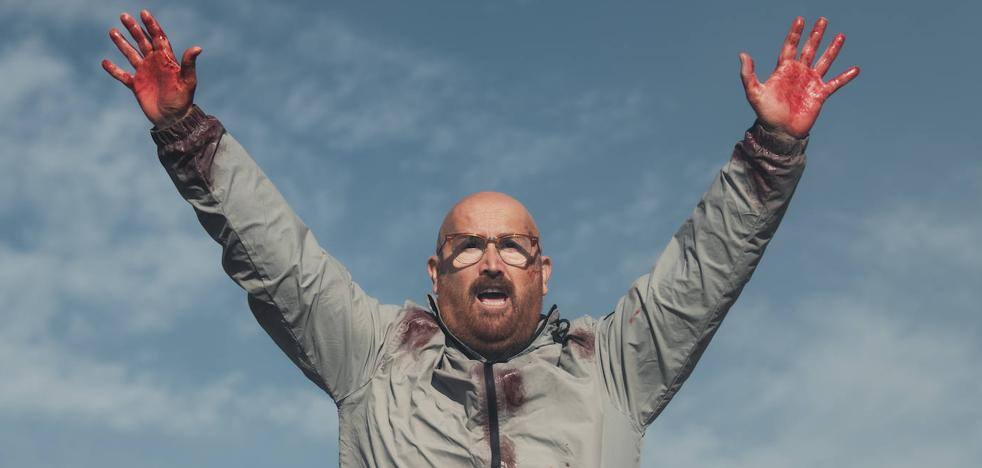Contemporary artists enter into a dialogue with the classics about a genre that reached its glory in the 17th century and is now practiced from very different perspectives
Long considered a minor genre, the still life, also known as ‘still life’, has been the protagonist of a magnificent exhibition at the Louvre in Paris until January 23, 70 years after his last Paris retrospective at the Orangerie in 1952. ‘Les Chooses ‘ (Things) presents a chronological and thematic overview of the history of still life from prehistoric times to the present day, through 170 works ranging from painting to video, through sculpture, photography and film.
The exhibition shows that the still life is not an old-fashioned genre, but is still very much alive, despite the fact that we call it ‘still life’ in Spanish. The expression in Spanish, shared with the French ‘nature morte’ and the Italian ‘natura morta’, contrasts with the term ‘still life’ in the English expression ‘still life’ or the German ‘Stilleben’.
Contemporary artists, such as the Majorcan painter Miquel Barceló or the hyper-realistic Australian sculptor Ron Mueck, create still lifes, just as artists did in the tombs of the pharaohs of ancient Egypt or the mosaics of Pompeii. The 17th century is considered the great century of still lifes, as they became popular in the West during that time.
‘The Pillar of the Missing Migrants’, the 18 meter high monumental sculpture by the Cameroonian artist Barthélemy Toguo under the Louvre pyramid by IM Pei, welcomes the visitor to an exhibition in which contemporary artists enter into dialogue with artists from the past.
Recently hunted animals or fish, fruits, flowers and other objects, from crockery and other kitchen utensils to shells, books, coins, jewelry and even animal skulls and bones are some of the recurring motifs that artists have used since ancient times until now. With these objects they represent, with more or less realism and symbolism, a collection of different ‘things’, for example set up on a kitchen table as a stage.
In the Louvre exhibition, the visitor will discover a series of axes from the prehistoric tomb of Gavrinis, Egyptian tomb steles, mosaics from Pompeii, Marcel Duchamp’s ‘readymade’, fragments of films by Jacques Tati and Buster Keaton, a sculpture by Alberto Giacometti and still lifes signed by Henri Matisse, Rembrandt, Édouard Manet, Chardin, Vicent Van Gogh, René Magritte, Paul Cézanne, Giorgio de Chirico and Foujita Tsuguharu.
Of course, the curious portraits of the Italian painter Giuseppe Arcimboldo should not be missing from the exhibition, who in the 16th century used flowers, fruits, plants, animals and other objects to paint human faces, an irreverence that gave him a place in history. art.
The exhibition also has a good presence of Spanish artists: Luis Egidio Meléndez, Juan Sánchez Cotán, Salvador Dalí, Francisco de Goya, Joan Miró, Pablo Picasso, Barceló and Esther Ferrer from San Sebastian.
Barceló is twice present in Paris. His painting ‘Grisaille with Swordfish’ (2022) is on display at the Louvre. In addition, the Mallorcan painter will present his new series of large still lifes until January 7 under the title ‘Grisailles’ in the gallery Thaddeaues Ropac in Patin, on the outskirts of the French capital.
Barceló is inspired for his still lifes by 17th-century Dutch painting and Spanish still lifes. He uses in his paintings a variation on the traditional grisaille technique, which dates back to the 14th century and consists of applying a layer of translucent color over a first layer of monochrome paint, which gives a sense of lightness and a touch of mystery to his work.
The Spanish artist, who lives between Paris and Mallorca, thus proposes a new interpretation of still life art, in which his close relationship with the sea, the concept of existence and the cycle of life and death are very present. These phantasmagoric paintings, populated by bulls and sea creatures, evoke, as Barceló explains in the Paris exhibition catalogue, ‘a Pompeii table or frozen ashes of things’.
Source: La Verdad
I’m Wayne Wickman, a professional journalist and author for Today Times Live. My specialty is covering global news and current events, offering readers a unique perspective on the world’s most pressing issues. I’m passionate about storytelling and helping people stay informed on the goings-on of our planet.



